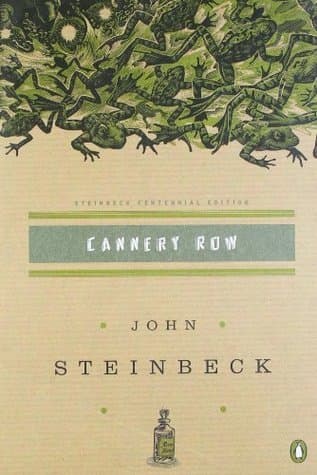
Book Review Summary: Cannery Row (Cannery Row, #1)
Introduction
"Cannery Row" by John Steinbeck is a novel that captures the essence of a place and its people during a trying time in American history. Set in the cannery district of Monterey, California, the book explores the lives of those who live on the edge of society, struggling to make ends meet. Steinbeck's writing style is captivating, and his descriptions of the characters and their surroundings transport readers to a different era. In this article, we will delve into the book's analysis, readers' opinions, and the reasons why this novel is recommended.
About John Steinbeck
John Steinbeck, the author of "Cannery Row," was a Pulitzer Prize-winning American writer known for his powerful storytelling. He was born in Salinas, California, and his upbringing in a culturally diverse region influenced his writing style. Steinbeck's works often explored themes of social inequality, migration, and the struggles of the working class during the Dust Bowl and the Great Depression. He received the Nobel Prize for Literature in 1962 and left a lasting impact on American literature.
Analysis of Views
- Steinbeck's captivating storytelling: Readers praise Steinbeck's ability to create engaging stories that capture the essence of a place and its people. His writing style is described as captivating, and his descriptions of the characters and their surroundings transport readers to a different era.
- Depiction of Monterey and the depression era: The book's setting in Monterey, California, during the depression era is a significant aspect that readers find appealing. Steinbeck's portrayal of the time period and its impact on the characters resonates with readers, providing a unique perspective on historical events.
- Strong character development: Steinbeck's characters are praised for their depth and complexity. Readers appreciate how he captures the struggles and resilience of his characters, allowing them to shine through even in difficult circumstances.
- Engaging vignettes: The book is structured with short vignettes that introduce readers to various denizens of Cannery Row. These vignettes often involve extreme violence or references to nature's cruelty, adding an element of tension and intrigue to the narrative.
- Limited female character development: Some readers express disappointment with the limited development of female characters in the book. While male characters are well-explored, female characters are portrayed as secondary figures with minimal depth. This aspect detracts from the overall enjoyment of the story for some readers.
Reasons for Recommendation
- Historical significance: "Cannery Row" provides readers with a glimpse into the lives of people living in Monterey during the depression era. It offers a unique perspective on historical events and provides insights into how people coped with difficult times.
- Engaging storytelling: Steinbeck's captivating storytelling style keeps readers engaged from start to finish. His ability to weave together various vignettes into a cohesive narrative makes for an enjoyable reading experience.
- Depth of characterization: Steinbeck's characters are well-developed, allowing readers to connect with them on a deeper level. Their struggles and resilience resonate with readers, making them relatable and memorable.
- Insight into Steinbeck's writing style: "Cannery Row" showcases Steinbeck's mastery of storytelling and his ability to create vivid descriptions of characters and settings. It serves as an excellent introduction to his writing style and offers readers a glimpse into his literary prowess.
Conclusion
"Cannery Row" by John Steinbeck is a captivating novel that explores the lives of those living in Monterey, California, during the depression era. Steinbeck's storytelling skills shine through his portrayal of characters and their surroundings, transporting readers to a different time and place. While some readers express disappointment with limited female character development, overall, the book is highly recommended for its historical significance, engaging storytelling, depth of characterization, and insights into Steinbeck's writing style. "Cannery Row" offers a unique perspective on American history and leaves a lasting impression on readers who appreciate powerful storytelling and well-developed characters.